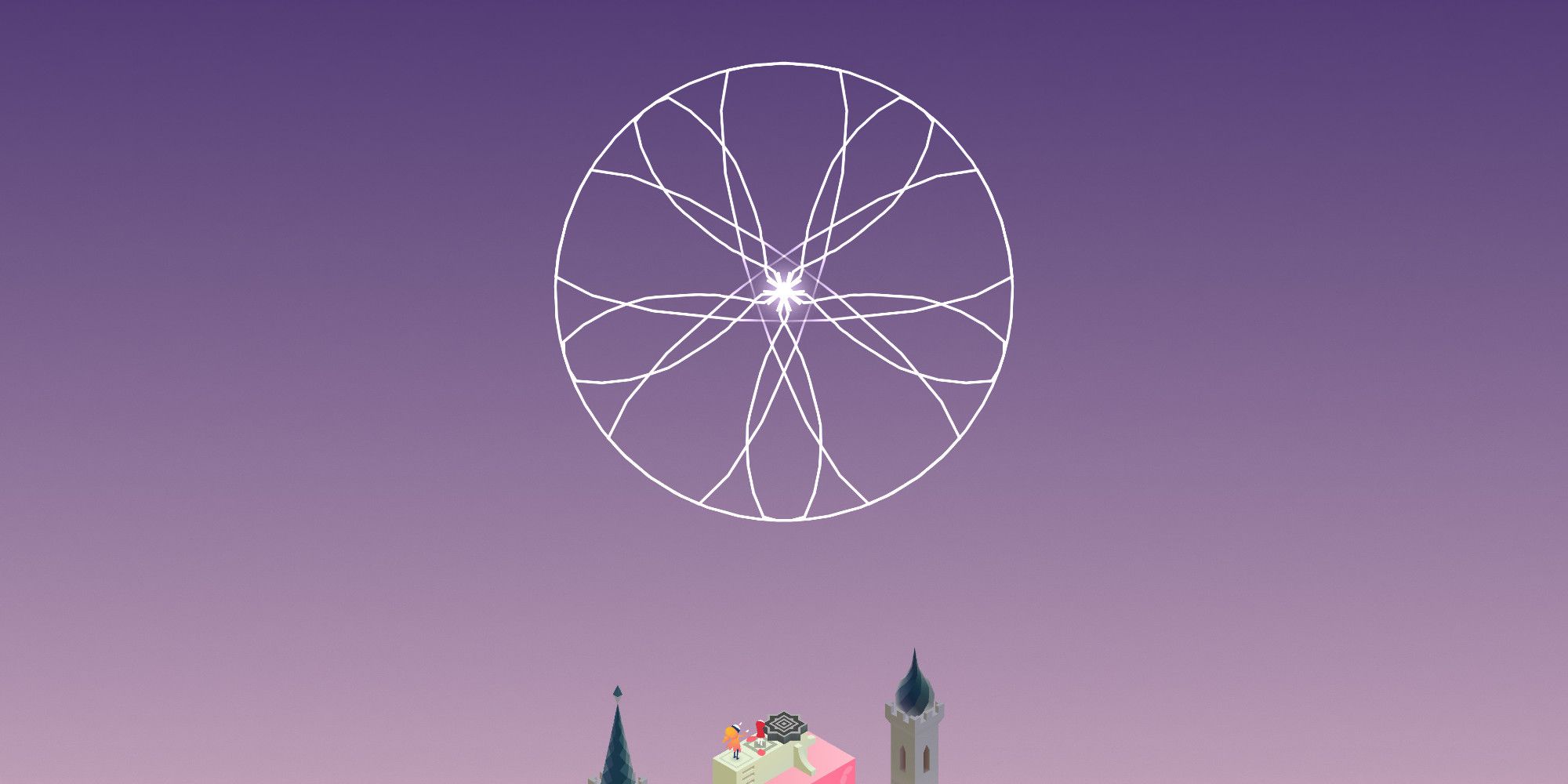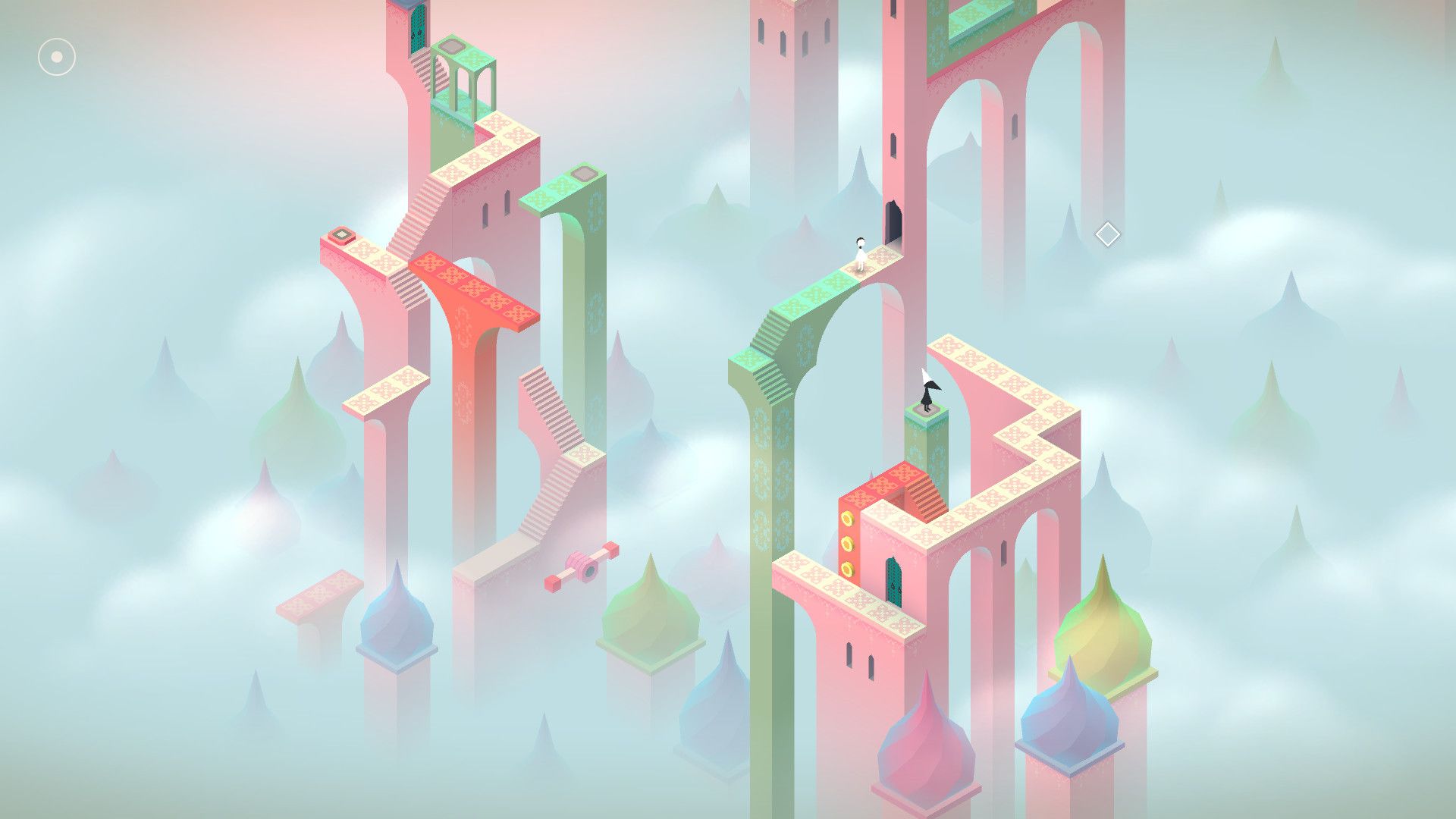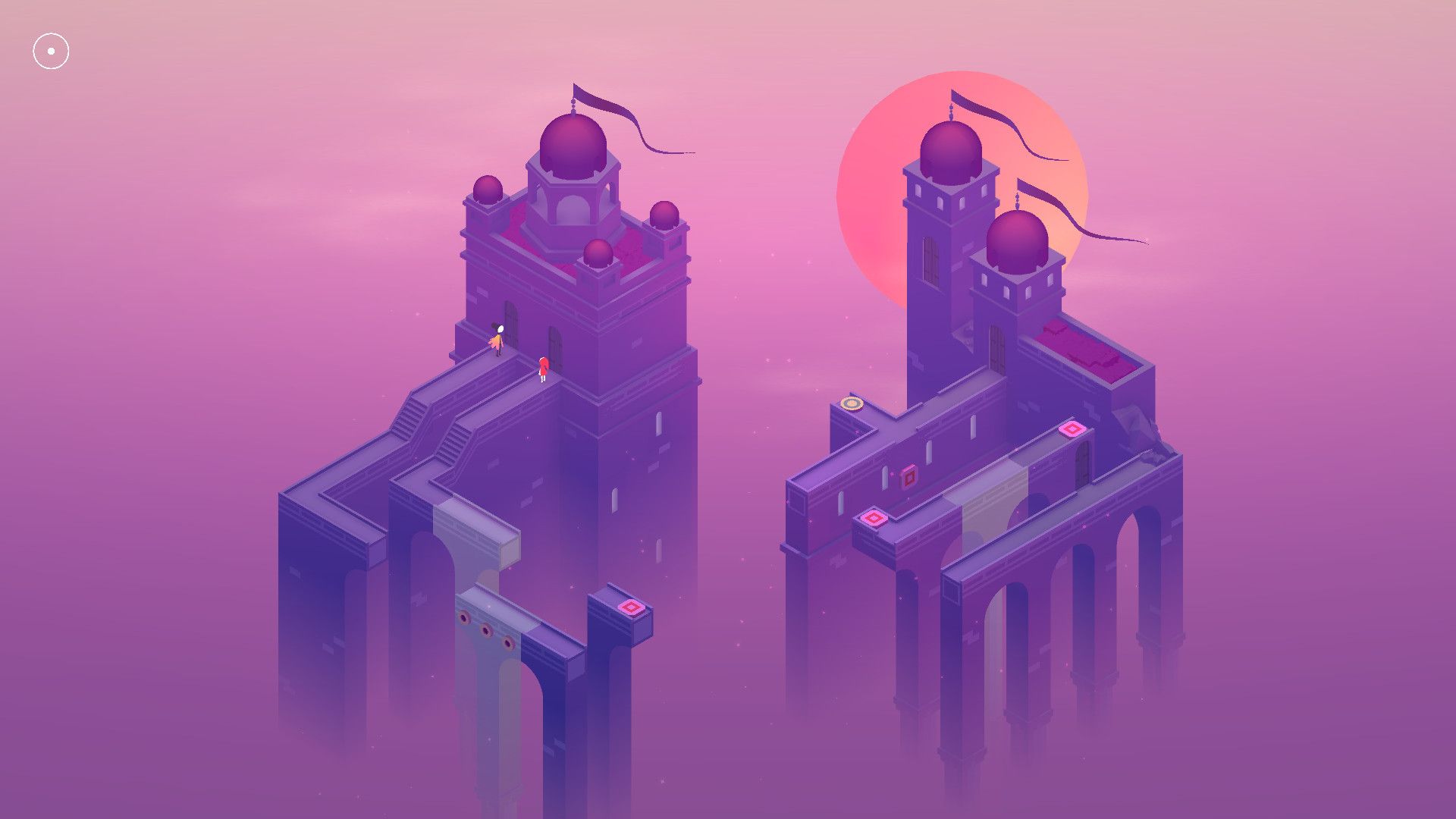Monument Valley: Panoramic Collection, developed and published by Ustwo Games, brings the acclaimed mobile puzzle game and its sequel to PC for the first time, along with all post-launch content for both games. The mobile game market is a controversial scene; titles like Diablo Immortal have faced heavy criticism for relying heavily on microtransactions and in-app purchases to get more profit out of players. Monument Valley, by contrast, stood out as a quiet, meditative puzzle game, and gained substantial notice from critics and fans.
Both Monument Valley games are puzzle-based, and rely primarily on the manipulation of the environment around the characters. The title takes inspiration from the work of M.C. Escher, and this can be seen in the manipulation and defiance of gravity that is a key part of most puzzles. The game, due to its mobile roots, has simple controls, and can be played entirely with the mouse; the main character will move wherever the player clicks if there's a clear path to get there, and puzzle elements can all be manipulated by clicking and dragging with the pointer.
Players will generally spend more time paying attention to the levels themselves than to the characters, as a lot of mechanics require direct input from the player; spinning wheels and sliding blocks must be manipulated to create paths for the character to take to their goal, and while the characters themselves will often find buttons to stand on or doors to enter, the level design is the central focus of the game.
Unlike more difficult puzzle games like Wordle, the puzzles in both Monument Valley games are rather easy, and most players should be able to clear them with little more than a few minutes of trial and error. The biggest obstacle in the PC port tends to come not from the puzzle design itself but from the mechanics of the game; the spinning wheels that appear in most levels to shift platforms into position in particular tend to be awfully finicky, and will sometimes resist settling in the right configuration even when it's clear that the game wants them to. This never presents more than a momentary nuisance, but when it happens multiple times across a single playthrough, it tends to get annoying.
Fortunately, these problems aren't enough to distract from Monument Valley: Panoramic Collection's creative and mind-bending level design. Even if the puzzles aren't that challenging, the way they warp the reality of the game and defy physics never gets any less surprising. One standout level from the first game has the player open different sides of a large box, which contains a different section of the level depending on which side was opened. The player must guide protagonist Ida through each of the box's levels to get to the end. Both games have no shortage of clever concepts like this, and there are very few levels in the collection that are as straightforward as they might appear at first glance.
Both of Monument Valley: Panoramic Collection's games contain some very gorgeous levels and creative gameplay, but both games are also very short experiences. Either one could be completed comfortably in a single sitting, and when post-launch content is factored in, Monument Valley 2 falls quite a bit behind its predecessor, with only one brief DLC chapter to its name. That being said, both titles are worth a try for anyone seeking a unique puzzle experience. Monument Valley: Panoramic Collection brings together two beautiful and creative games, and what they lack in difficulty and length they more than make up for in creativity and style.
Monument Valley: Panoramic Collection releases today, July 12th, for PC. Screen Rant was provided with digital PC codes for the purposes of review.



